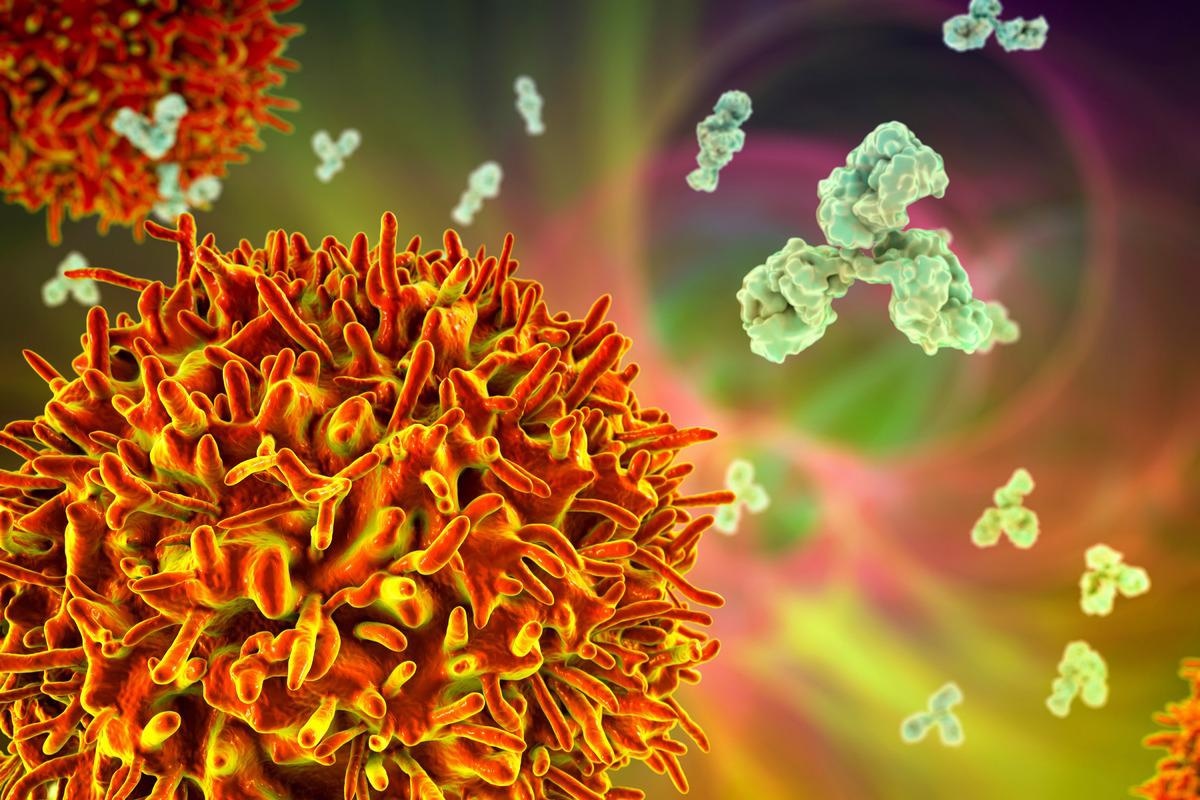Immunization, as well as microbial infections, stimulate the adaptive immune system and render long-term protection against the pathogen. This immunity is generated via the germinal center (GC) responses and is expressed through long-span plasma and memory B (Bmem) cells.
 Study: Recall of B cell memory depends on relative locations of prime and boost immunization. Image Credit: Kateryna Kon/Shutterstock
Study: Recall of B cell memory depends on relative locations of prime and boost immunization. Image Credit: Kateryna Kon/Shutterstock
The first line of defense of adaptive immunity is through the maintenance of circulating antibodies (Ab). While Bmem cells rapidly differentiate into plasmablasts/cytes (PBs/PCs) and trigger high-affinity antibody responses, the Bmem cells that reenter the GCs undergo updating of their B cell receptors (BCRs), which aid in preventing infection by newer emerging viruses, such as human immunodeficiency virus (HIV)-1 and severe acute respiratory syndrome coronavirus 2 (SARS-CoV-2).
Viruses that mutate to enhance their fitness and transmissibility generate escape variants that fail to bind to preexisting Bmem BCRs and Abs. However, whether Bmem cells recall GC responses remains uncertain as higher affinity B mem cells tend to differentiate into PB/PCs.
Researchers have found that both immunization and microbial infection register local and systemic humoral memories. Local lymph nodes (LNs) retain antigens causing migration and sustenance of specific Bmem cells and LNs in proximity to primary immunization sites generate more Ab-secreting cells.
The study
A recent study published in Science Immunology investigated whether a specific population of local Bmem cells in the proximal LNs produce secondary GC responses that are different from those at distal sites and if the location in humoral immunity is relevant only to nonlymphoid tissues.
Here, secondary GC responses were compared between the same site (ipsilateral leg) as immunization and the opposite (contralateral) leg of mice.
Findings
The results showed that although the secondary GC and serum Ab responses were equivalent in enormity, the quality differed. Ipsilateral boosts were secondary GC responses with higher numbers of cells than the contralateral boosts. Such Gc responses comprised greater B cells with amplified immunoglobulin (Ig) mutation and BCRs that bind more actively.
The active, primary GC responses were disrupted by injecting anti-CD154 Ab––this did not attenuate the local recall bias for higher-affinity cells that had mutated earlier. Additionally, ipsilateral boosts produced secondary GC B cells more efficiently in response to heterologous antigens; these bound to primary, as well as boost antigens.
These findings depicted that local memory is retained in the Bmem cells, GC phenotype B cells, and GC B cells. The findings can affect vaccination strategies against emerging pathogens.
This study also established the crucial role of locality in Bmem cell participation in GC-response recall. A combined approach of B cell cultures with a mouse model showed that primary GC B cells that harbor wide-spectrum BCR affinities and variable gene (VH) mutations took part in secondary GC responses. These responses were notably more potent after local boosts than with boosts at distal sites.
When sensitized with heterologous Influenza Hemagglutinin (HA) antigen the local boosts bound more efficiently than the distal boosts; the former linked with the prime, as well as the boost HAs. HA cross-reactive B cells engaged in a more advanced manner to secondary GCs, together with elevations of serum IgG––which bound the priming Has and those that bound to boosting Has.
Immunization drastically modifies local microenvironments in the draining LNs. Factors that impact the observed locality include local antigen retention, local T-helper cells, and other cell types, and targeted cytokine and chemokine milieu. Antigens are retained in follicular dendritic cells (FDCs); these sustain “primed B cells” within the draining LNs without allowing for their differentiation into PBs/PCs––this phenomenon confers long-span, local B cell memory.
Local B cell memory is speculated to be retained in the LNs as Bmem cells––that could be either GC-dependent, GC-independent, persistent GC B cells, or GC phenotype B cells. These primed B cells appear to stimulate GC responses locally.
Furthermore, the results disclosed that MR-1-resistant B cells were instrumental in secondary GC responses post-local boosts. The findings delineate a discrepancy between previous data and the recent observations concerning Bmem recruitment to recall GCs.
Recent findings from other studies suggest that fate-mapped cells, the progeny of the primary GC B cells, are less common in secondary GCs post contralateral boosts. On the other hand, samples from recent influenza vaccinees have shown that ample antigen-binding GC B cells harbor increased Ig somatic hypermutation (SHM). In addition, they are broadly cross-reactive, as observed with the Bmem origin.
The mechanisms and effects of secondary GC B cells that fail to bind with antigens remain obscure, both primary and secondary GCs grant permissive environments and support B cell clones, and show a wide range of BCR affinities.
Conclusion
Overall, the findings indicate that local boosts with the heterologous HA – H3, effectively activate H1/H3 cross-reactive B cells that are sustained as long-span primed B cells. Cross-reactive B cells in secondary GCs cause updating of their BCRs, which can then bind to newer antigens.
Hence, reactivation of local B mem cells by subsequent vaccinations on the same sites can ensure effective participation of B cells in GC response recall––which induces SHM, affinity maturation, and clonal selection to newer antigens. Rapidly mutating viruses mandate that such participation must be a feature of all serial vaccine strategies.